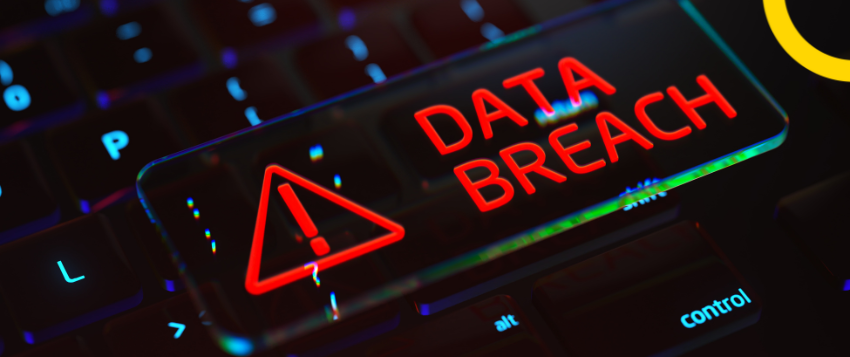In recent times, cyberattacks worldwide have become increasingly prevalent, and cyber criminals show no signs of relenting. In the treacherous realm of the digital age, cybersecurity stands as the guardian of trust, the shield against chaos, and the defender of organisational integrity. For leaders, the question is not merely about caring for cybersecurity—it is about survival, reputation, and staying one step ahead of cyber adversaries.
In the face of these escalating challenges, leadership finds itself at the heart of the cybersecurity battlefield. Strong leadership is not merely an option; it becomes the linchpin of a successful defence strategy. Now more than ever, visionary leaders must champion a culture of cybersecurity awareness, resilience, and proactive measures.
Recent reports have borne witness to countless high-profile cases where data breaches have shaken industries to their core, leaving businesses to grapple with a pressing question: Are they truly safe? As the spectre of cyber threats looms large, how can organisations ensure that they won’t face the same fate? In this article, we’re going to look at cyberattacks that happened recently and the lessons we can learn from them.
Recent Cyberattacks Experienced by Companies
Many companies have fallen victim to all sorts of cyberattacks. Let’s take a look at companies that have recently experienced this and lessons to learn from them:
- T-Mobile
T-Mobile, a wireless telecommunications services company had two data breaches in 2023. The company announced its first cybersecurity incident in January where personal data of 37 million customers was exposed. The second one was in April where 836 customers were exposed.
According to Security Magazine, Claude Mandy, Chief Evangelist, Data Security at Symmetry Systems said she was disappointed to see yet another T-Mobile data breach — regardless of the number of customers impacted. She further stated that organisations like T-Mobile need to provide more detailed analysis on the technical cause of the data breach — by providing a more detailed analysis, which would help the entire industry to take proactive steps to avoid similar issues.
- Dis-Chem
In May 2022, South African pharmacy retail Dis-Chem experienced a cyberattack through its third-party service provider, resulting in the compromise of data belonging to over 3.6 million South Africans, this is according to ITWeb. Upon becoming aware of the incident, Dis-Chem initiated an immediate investigation to prevent any further breaches. They have also notified affected individuals in accordance with section 22 of POPIA (Protection of Personal Information Act) and confirmed that unauthorised access to certain personal information occurred around April 28, 2022.
Dis-Chem said it is actively monitoring the web, including the dark web, with the help of external specialists to detect any potential publication of the compromised personal information.
- Showmax
In June 2023, streaming service Showmax fell victim to hackers who targeted and published login credentials of approximately 27,000 subscribers on a fake website. Showmax clarified that the data was not stolen from their system but might have been obtained from other sources. According to IOL, the company assured customers that their financial information remains secure and stated that their investigation revealed compromised email addresses and passwords.
- ChatGPT
ChatGPT, renowned for its groundbreaking AI capabilities, came under public scrutiny following a data breach in late March. The breach exposed certain user information, prompting OpenAI, the parent company of ChatGPT, to swiftly take the platform offline and implement remedial actions. Users affected by the breach were promptly notified and provided with additional security measures. This incident underscores the growing importance of implementing robust security protocols to safeguard the increasing number of AI tools that play a significant role in simplifying our lives.
These examples are just a few among many incidents that have occurred over the years. Numerous organisations, including government agencies, healthcare institutions, schools, NGOs, and others, have fallen victim to cyberattacks. The pervasive nature of these incidents serves as a stark reminder that no organisation is exempt from such risks. Whether an entity maintains an online presence or collects customer data, cybersecurity breaches can potentially impact any organisation, underscoring the imperative for implementing robust protective measures and preparedness.
What can we Learn from these Incidents?
- Transparency and Trust: Be transparent in times of crisis as it builds trust, fosters credibility, and demonstrates accountability, even during challenging situations.
- Proactive communication: Proactively informing stakeholders about the incident, its impact, and the measures being taken to address the breach can help manage the situation and prevent misinformation.
- Detailed analysis: As an organisation, cybersecurity teams should be encouraged to conduct thorough and detailed analyses of any security incidents that occur. Understanding the technical causes of a breach allows for targeted improvements to prevent similar attacks in the future.
- Cybersecurity Training for Staff: Cyberproofing your staff is critical in the fight against cyber threats. Provide regular cybersecurity awareness and training programmes to all employees, ensuring they understand potential risks, recognise phishing attempts, and practice safe online behaviour. Educated staff becomes an essential line of defence against cyberattacks.
By implementing these practices, organisations can strengthen their cybersecurity posture and better protect themselves from cyber threats.
What are the Current Trends of Cyberattacks?
As a leader, knowing what the trends are, will help keeping your organisation safe. Here are the top trends for 2023:
- Ransomware attacks: Ransomware attacks have gained prominence due to their lucrative nature, enabling cybercriminals to demand ransom payments from victims by encrypting their computer files.
- Application Security: The pandemic-induced shift of businesses to the online realm has led to a significant surge in application security spending, estimated to surpass $7.5 billion, as reported by Statista. However, no application is immune to risks like hacking, zero-day attacks, or identity theft. Guaranteeing application security entails writing secure code, designing secure application architecture, implementing robust data entry verification, and promptly addressing vulnerabilities to avert unauthorised access or modification of application resources.
- AI in cyberattacks: AI-driven attacks can adopt diverse strategies, including phishing emails, malware, and social engineering scams. By utilising AI, attackers can create exceptionally persuasive phishing emails that imitate trusted sources, effectively deceiving users into clicking on malicious links or downloading harmful software.
- Users as an attack surface: A notable cybersecurity trend anticipated in 2023 involves a heightened emphasis on users as an attack surface. Cyber attackers will persist in targeting an organisation’s user base through tactics such as phishing, social engineering, and other means to gain unauthorised access.
Industries that Are Prone to Cyberattacks
According to Embroker, the following are the industries that are most vulnerable to cyberattacks:
- Banks and Financial Institutions: These organisations are at high risk due to their storage of sensitive data like credit card information, bank account details, and personal customer or client data.
- Healthcare Institutions: Healthcare facilities are vulnerable targets as they store health records, clinical research data, and patient information, including social security numbers, billing details, and insurance claims.
- Corporations: Companies are susceptible to cyberattacks due to the wealth of valuable data they hold, including product concepts, intellectual property, marketing strategies, client and employee databases, contract deals, client pitches, and more.
- Higher Education: Educational institutions are targeted because they house enrolment data, academic research, financial records, and personally identifiable information such as names, addresses, and billing details.
Where Can You Train you and your Staff?
Digital Regenesys offers a cybersecurity programme which can help you and your team be cyber-vigilant. Our programme will help you gain a deep understanding of cyber security principles & concepts to stay ahead by working on projects, simulations, and cases. With this programme, you will get:
- International Recognition
- Cyber Security Governance and Compliance
- Cyber Risk Management
- Ethical Hacking and Penetration Testing
For more on how you can enrol or enquire, click here.
REFERENCES
- Digital Regenesys (2023). Certification Programme in Cybersecurity
- IT Web (2021). Over 3.6m records exposed in Dis-Chem cyber attack
- IOL (2023). Showmax confirms cyber attack compromised subscribers’ details
- Times Live (2023). Showmax admits number of subscriber login details were hacked
- Security Magazine (2023). T-Mobile confirms second data breach in 2023
- ARS Technica (2023). T-Mobile discloses 2nd data breach of 2023, this one leaking account PINs and more
- The Hacker News (2023). Top 10 Cybersecurity Trends for 2023: From Zero Trust to Cyber Insurance
- Statista (2023). Application security spending worldwide from 2017 to 2023
- Data Science Dojo (2023). Top 6 cybersecurity trends to keep an eye on in 2023













